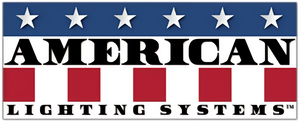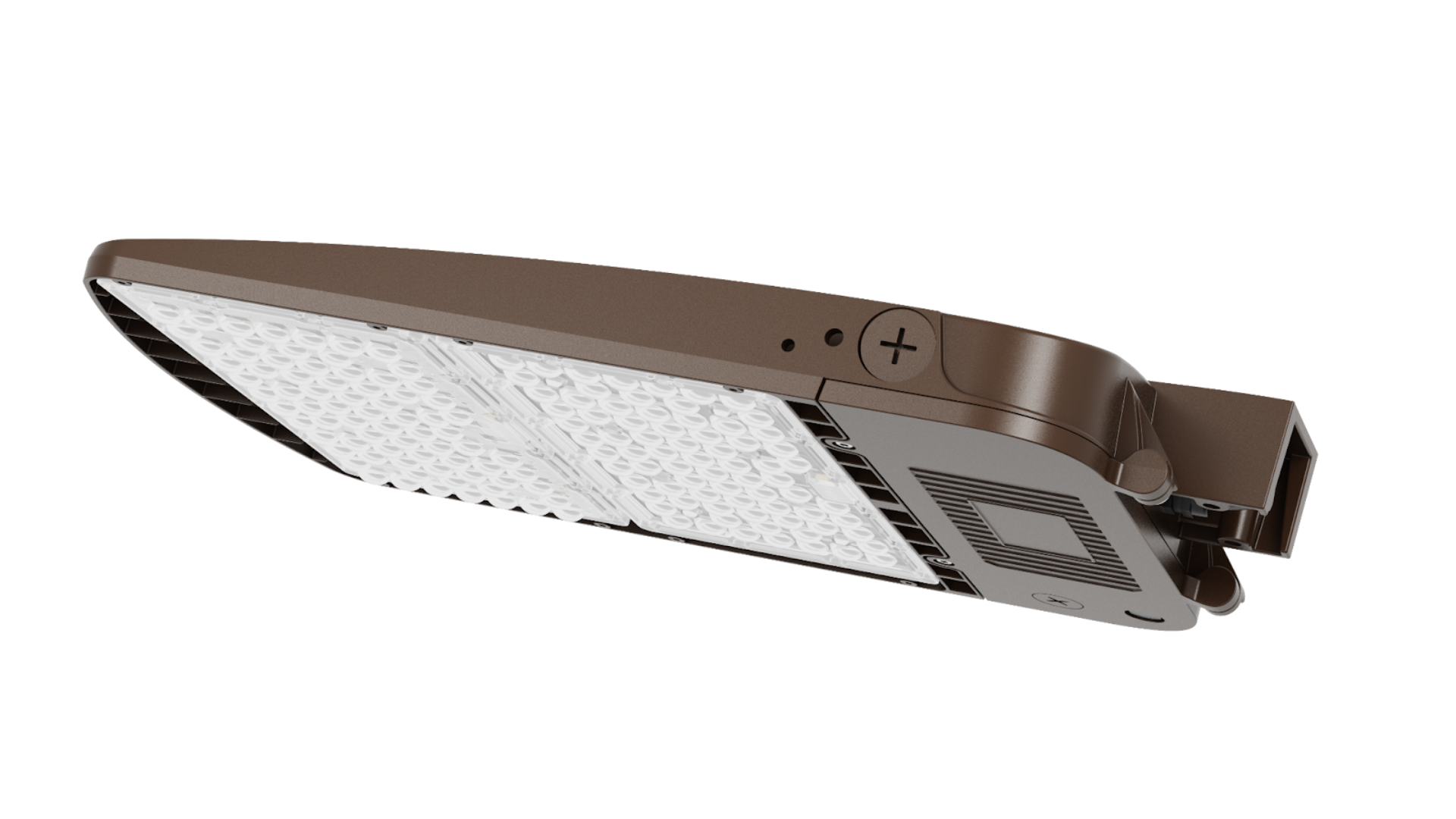Key Takeaways:
- Core Mechanism: LED lights use electroluminescence, not heat, to produce visible light, making them far more efficient than traditional lighting.
- Commercial Benefit: Long lifespan and low maintenance make LEDs ideal for commercial use, reducing costs across large-scale operations.
- Lighting Versatility: From flood lights to panel lights, LEDs offer precise, directional lighting that can be tailored to any indoor or outdoor setup.
When you rely on lighting day in and day out, whether across warehouses, job sites, or building exteriors, understanding the technology behind your lighting becomes more than just a curiosity. It becomes a strategic advantage. That’s where LED lighting stands apart. While traditional lighting technologies depend on heat and gas to create illumination, LEDs use a far more efficient and reliable mechanism that dramatically lowers energy use and reduces maintenance over time. From reducing operating costs to increasing safety and visibility, the way LEDs work plays a direct role in the performance of modern commercial spaces.
At American Lighting Systems, we’ve built our reputation by delivering over 250 top-tier commercial lighting solutions trusted by contractors, facility managers, and specifiers across the country. With a focus on performance, value, and product reliability, we offer a complete range of indoor and outdoor LED lighting that meets the highest standards for commercial and industrial environments.
In this piece, we’ll be breaking down how LED lights work, explaining the science behind the technology, how it compares to traditional lighting, and why it’s become the preferred choice for commercial lighting systems.
What Are LED Lights?
LED stands for Light Emitting Diode, a compact electronic device that produces light through a process called electroluminescence. When an electric current passes through the semiconductor material inside the diode, it excites electrons, which then release energy in the form of photons, which we see as light. This process is far more efficient than traditional methods that rely on heat, such as incandescent bulbs or even fluorescent tubes.
Because LEDs do not burn filaments or use gas to generate light, they offer far greater efficiency, produce minimal heat, and last significantly longer. This makes them ideal for commercial, industrial, and residential applications alike.
At American Lighting Systems, we provide a full range of commercial indoor and outdoor LED lighting solutions tailored to contractors, facility managers, and specifiers. Our catalog includes cutting-edge LED flood lights, wall packs, and panel lights engineered for long-term reliability and performance.
The LED Illumination Process: A Look Inside The Technology
LED lighting might seem simple on the surface, but the science behind it is incredibly advanced. Understanding the inner workings helps explain why LEDs are so efficient, long-lasting, and adaptable to commercial environments. Here's a closer look at what powers the LED illumination process:
The Role Of The Semiconductor
At the heart of an LED is a semiconductor chip made from materials like gallium nitride. This chip contains two regions: one with excess electrons (n-type) and one with electron deficiencies or “holes” (p-type). When electricity flows through the chip, electrons move across the junction, combining with holes and releasing energy in the form of light.
How Light Is Generated
This release of energy results in electroluminescence, the emission of photons (light particles). The process is extremely efficient because almost all the electrical energy is converted directly into light, with very little wasted as heat. This is a key reason why LEDs remain cool to the touch and reduce energy costs significantly.
Controlling Color And Brightness
The color of the light is determined by the materials used in the semiconductor and the wavelength of the emitted photons. For white LEDs, a phosphor coating is used to convert blue or ultraviolet light into a broader visible spectrum. Brightness is controlled by adjusting the current passing through the LED, allowing for precision in output.
LED Technology In Commercial Lighting
The precision and efficiency of this light mechanism make LEDs ideal for industrial and commercial use. Products like our LED flood lights and LED wall packs offer consistent, high-performance lighting with minimal maintenance. For more complex installations, bull horn light mounts help distribute LED light efficiently across wide areas.
How LED Bulbs Work Compared To Traditional Lighting
Not all light sources operate the same way, and the difference between LED bulbs and traditional lighting is more than just efficiency. The internal mechanisms, energy usage, heat output, and durability vary drastically between technologies. Here’s how LED lighting technology compares to older solutions:
Energy Conversion Method
Traditional incandescent bulbs generate light by heating a metal filament until it glows, wasting a significant portion of energy as heat. Fluorescent lights use gas discharge and phosphor coatings to create visible light, which is more efficient but still prone to flickering and degradation over time. In contrast, LEDs use electroluminescence, converting electrical current directly into light with minimal heat loss.
Energy Efficiency
LED bulbs consume up to 80% less energy than incandescent lights and still outperform compact fluorescents. This high efficiency translates into significant long-term savings for commercial facilities that rely on continuous lighting. It's also a key reason why more businesses are switching to LED solutions like panel lights for interior applications.
Lifespan And Maintenance
While incandescent bulbs may last 1,000 hours and fluorescent tubes around 10,000, LEDs often exceed 50,000 hours of use. They are more resistant to shock, temperature changes, and vibrations, making them ideal for tough environments. Fewer replacements mean lower maintenance costs, especially important in large-scale facilities.
Environmental Impact
LEDs are mercury-free, unlike fluorescents, and they consume less power, reducing a building’s carbon footprint. Their extended lifespan also reduces waste from frequent replacements. Choosing commercial-grade LED products from American Lighting Systems supports greener building practices and long-term energy goals.

Why LED Lighting Technology Is More Efficient
Efficiency is one of the biggest advantages of LED lighting, and it's not just about using less electricity. The entire design of LED technology is built around minimizing waste, maximizing output, and extending performance in real-world conditions. Let’s explore why LEDs lead the way in lighting efficiency:
Lower Energy Consumption
LEDs require significantly less power to produce the same amount of light as incandescent or fluorescent bulbs. For example, a 10-watt LED can deliver the same brightness as a 60-watt incandescent, dramatically lowering energy bills, especially in commercial environments that operate lighting systems for extended hours.
Minimal Heat Loss
Unlike traditional bulbs, LEDs generate very little heat, converting most of the electrical energy directly into visible light. This not only makes them safer to use but also helps reduce HVAC loads in climate-controlled facilities. Less heat means less wasted energy, which improves overall system performance.
Directional Lighting
LEDs emit light in a specific direction, eliminating the need for reflectors or diffusers that can trap or scatter light. This makes them especially effective in applications where focused lighting is essential, such as outdoor security with LED flood lights or targeted interior lighting using panel lights.
Smarter Controls And Integration
Many LED systems are compatible with dimmers, motion sensors, and smart controls, allowing users to reduce output when full brightness isn’t needed. This flexibility further enhances efficiency by matching light usage to real-world demand.

Long-Term Cost Benefits
While the upfront cost of LEDs may be higher, the reduced energy use, extended lifespan, and lower maintenance make them the most cost-effective choice over time. For businesses managing large facilities, the ROI from upgrading to commercial LED solutions is both fast and substantial.
Applications Of LED Lighting In Commercial Spaces
LED lighting isn’t just efficient, it’s adaptable. In commercial environments, the demands placed on lighting systems vary widely, from 24/7 operation to extreme weather conditions or specific visibility requirements. That’s why LED illumination has become the standard across industries, offering flexible solutions that meet both performance and regulatory needs.
Outdoor Commercial Lighting
Outdoor environments require durable fixtures with high lumen output and weather resistance. Products like LED flood lights and LED wall packs are ideal for parking lots, building exteriors, and perimeter security. When mounted with accessories like bull horn light mounts, these lights provide wide-area coverage and elevated visibility for maximum safety.
Indoor Commercial And Industrial Lighting
In warehouses, offices, and manufacturing spaces, lighting must be consistent, glare-free, and energy-conscious. Panel lights are often used in drop ceilings and open-plan workspaces for their sleek design and even light distribution. LED retrofit kits and linear fixtures are also popular for upgrading outdated systems without the need for full replacement.
Specialized Facility Use
LEDs excel in settings with specific environmental or operational needs, including cold storage, high ceilings, or locations prone to moisture or vibration. American Lighting Systems provides options that meet IP ratings, temperature tolerances, and regulatory codes for specialized applications, ensuring that businesses stay compliant without sacrificing performance.
Explore Commercial LED Lighting Solutions From American Lighting Systems
At American Lighting Systems, we specialize in high-performance LED lighting designed specifically for commercial and industrial environments. With over 250 SKUs covering both indoor and outdoor lighting, our catalog is built to support contractors, facility managers, and project specifiers across a range of industries.
Whether you need to illuminate a warehouse, secure a parking lot, or retrofit outdated fixtures in a large office space, we offer a solution that delivers on quality, efficiency, and longevity. Popular product lines include:
- LED flood lights for powerful outdoor area lighting
- LED wall packs for commercial building exteriors
- Bull horn light mounts to maximize pole-mounted coverage
- Panel lights for modern, glare-free indoor illumination
We also offer fast B2B support, competitive pricing, and reliable logistics, helping your projects stay on time and on budget. Learn more about our mission, product quality, and who we serve on our About Us page.
Final Thoughts
Understanding how LED lights work gives you more than just technical insight; it helps you make smarter decisions about energy, maintenance, and long-term investment. The underlying technology behind LED lighting isn’t just a modern upgrade; it represents a shift toward performance-based lighting that reduces waste, minimizes downtime, and supports a more sustainable approach to facility management.
LEDs outperform traditional lighting in nearly every category: efficiency, heat reduction, lifespan, durability, and environmental impact. They don’t rely on fragile filaments or gas-filled tubes. Instead, they use solid-state components designed for resilience and precision. Whether you’re outfitting a new commercial space or upgrading an outdated lighting system, LEDs provide the kind of consistent, low-maintenance illumination that modern operations require.
At American Lighting Systems, we’re not just supplying lighting, we’re providing solutions designed to last, scale, and perform in the toughest commercial environments. Our product lines are engineered to meet the demands of professionals who don’t have time for trial and error.
Read Also:
Frequently Asked Questions About How LED Lights Work
What does "diode" mean in LED, and why is it important?
A diode is a component that allows current to flow in one direction only. In LEDs, it’s the key element that enables the electroluminescence process to create light.
Can LED lights change color without filters?
Yes. By altering the semiconductor materials or combining red, green, and blue LEDs in one chip, manufacturers can create color-changing LEDs without filters.
Why do some LED lights flicker, and how can it be fixed?
Flickering often comes from incompatible dimmer switches or poor-quality drivers. Using high-quality, dimmable LED drivers usually resolves the issue.
Are all LED lights dimmable by default?
No. Only LEDs specifically designed to be dimmable will work with dimmer switches. Always check product specs before installation.
Do LED lights attract insects like traditional bulbs?
Less so. LEDs emit very little UV light, which is what typically attracts bugs, making them better for outdoor areas where insects are a concern.
Can LED lights operate in freezing temperatures?
Yes. In fact, LEDs often perform better in cold environments, which is why they’re popular for cold storage and outdoor winter lighting.

